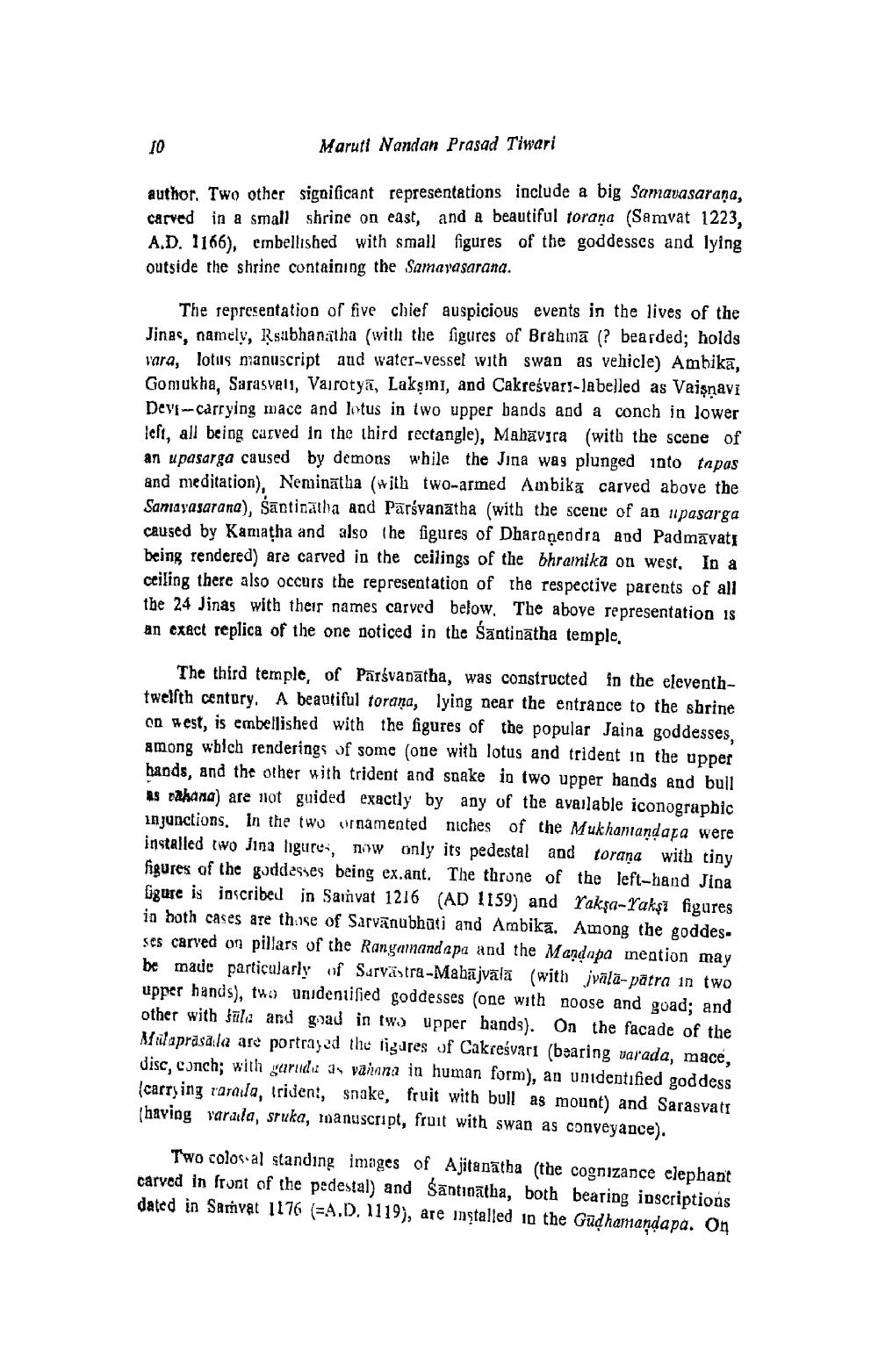________________
Maruti Nandan Prasad Tiwari
author. Two other significant representations include a big Samavasarana, carved in a small shrine on east, and a beautiful torana (Samvat 1223, A.D. 1166), embellished with small figures of the goddesses and lying outside the shrine containing the Samarasarana.
The representation of five chief auspicious events in the lives of the Jinas, namely, Rsubhanatha (with the figures of Brahia (? bearded; holds vara, lotus manuscript and water-vessel with swan as vehicle) Ambika, Gomukha, Sarasvali, Vairotya, Laksini, and Cakreśvarı-labelled as Vaişnavi Dey-Carrying mace and lotus in two upper bands and a conch in lower Icft, all being carved in the third rectangle), Mahavira (with the scene of an upasarga caused by demons while the Jina wag plunged into tapas and meditation), Neminātha (with two-armed Ambikā carved above the Samayasarana), Satinatha and Pārsvanātha (with the scene of an u pasarga caused by Kamatha and also the figures of Dharanendra and Padmavati being rendered) are carved in the ceilings of the bhramika on west. In a ceiling there also occurs the representation of the respective parents of all the 24 Jinas with their names carved below. The above representation is an exact replica of the one noticed in the Santinātha temple.
The third temple, of Parsvanatha, was constructed in the eleventhtwelfth century. A beautiful torana, lying near the entrance to the shrine on est, is embellished with the figures of the popular Jaina goddesses, among which renderings of some one with lotus and trident in the upper hands, and the other with trident and snake in two upper hands and bull as takana) are 110t guided exactly by any of the available iconographic injunctions. In the two ornamented niches of the Mukhantandaza were installed two fina figures, n only its pedestal and torana with tiny figures of the goddesses being ex.ant. The throne of the left-hand Jina Ggure is inscribed in Samvat 1216 (AD 1159) and Yaksa-Yakşi figures in both cases are those of Sarvānubhati and Ambika. Among the goddes. ses carved on pillars of the Rangamandapa and the Mandapa mention may be made particularly of Survästra-Mabājvālā (with jvāla-pātra in two upper hands), tuo unidentified goddesses (one with noose and goad; and other with sila and goad in tw.) upper hands). On the facade of the Mtu aprasaila ars portrayed the rigures of Cakreśvarı (bearing varada, mace, disc, cunch; with garudi: as vāvana in human form), an unidentified goddess carrying rarada, trident, snake, fruit with bull as mount) and Sarasvati (having varala, stuka, manuscript, fruit with swan as conveyance).
Two colosal standing images of Ajitanātha (the cognizance elephant carved in front of the pedestal) and Santinātha, both bearing inscriptions dated in Samvat 1176 (=A.D. 1119), are installed in the Gudhamandapa. On




